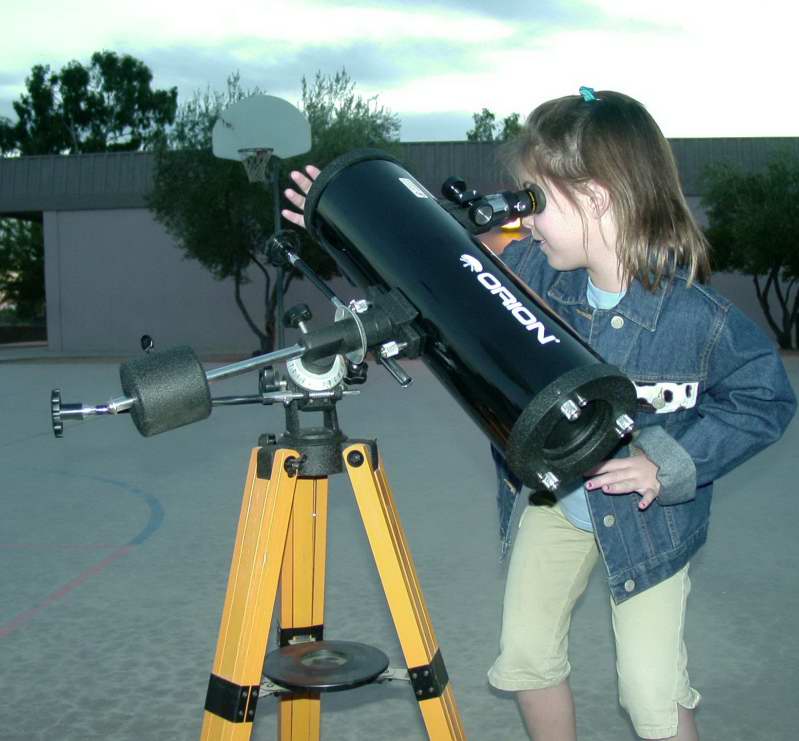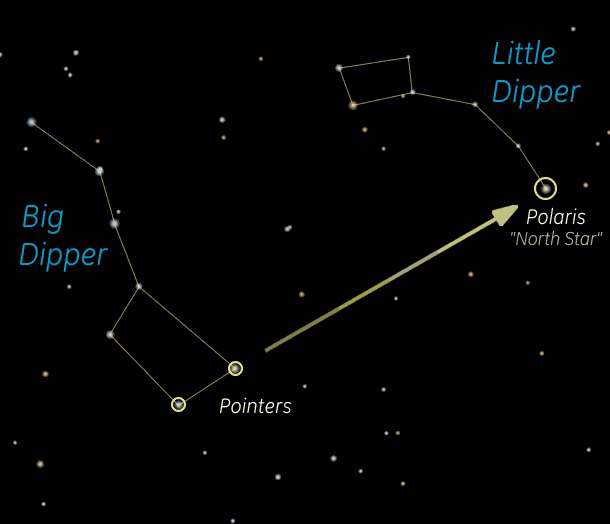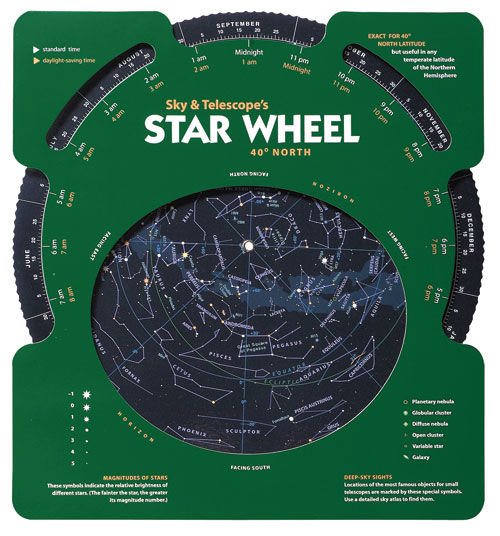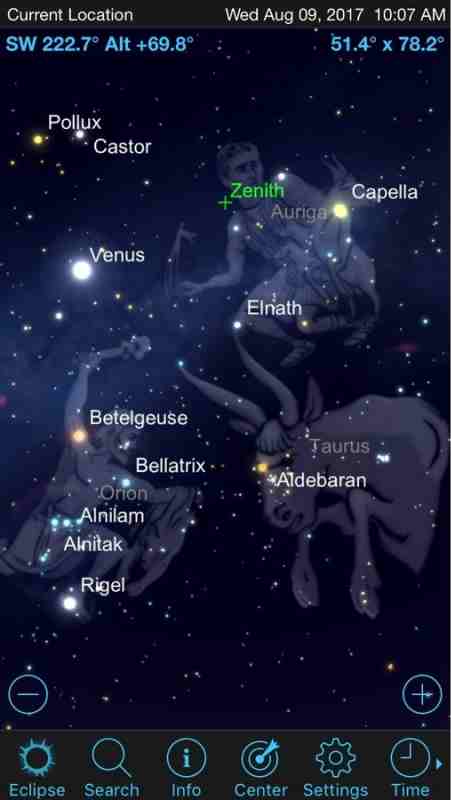Beginner's Guide
Getting Started
What You Need
You need no special knowledge or equipment to become an amateur astronomer. You simply need an interest in astronomy! And to be a good amateur astronomer you simply want to learn more.
 Before getting into more details we must talk just a little about telescopes because for too many
of the uninitiated a telescope
is synonymous with astronomy. Yes, telescopes are wonderful tools (and you'll eventually want one of your own),
but there is so much more to astronomy than just the viewing of celestial objects through a telescope.
And in order to make the most of a telescope will require some general astronomy knowledge. We will discuss telescopes
later. However, we also know from experience that many start out the hobby with the purchase of a telescope.
Read on because the following information will be immeasurably helpful for operating and enjoying your telescope.
Before getting into more details we must talk just a little about telescopes because for too many
of the uninitiated a telescope
is synonymous with astronomy. Yes, telescopes are wonderful tools (and you'll eventually want one of your own),
but there is so much more to astronomy than just the viewing of celestial objects through a telescope.
And in order to make the most of a telescope will require some general astronomy knowledge. We will discuss telescopes
later. However, we also know from experience that many start out the hobby with the purchase of a telescope.
Read on because the following information will be immeasurably helpful for operating and enjoying your telescope.
Naked Eye aka Unaided Eye
You can do a lot of astronomy with just your eyes! The night sky has a myriad of objects for viewing. With just your eyes you can see a galaxy that is 2.5 million light-years away. You can see not only the moon, but 5 planets, meteors and meteor showers, star clusters, nebulas, and the occasional comet.
"You can observe a lot by just watching." - Yogi Berra
For most of human history there were no telescopes. The ancients viewed the sky and charted the positions of the stars and noted there were a few that didn't stay put but "wandered" in the sky. These were the planets (which comes from the Greek meaning wanderer) and they puzzled as to why they moved as they did. And just by explaining these movements they eventually determined that Earth was not the center of our solar system. They calculated the size of the Earth to amazing accuracy and a rough distance to the moon. Such is the power of observation.
Learning the Sky
 You should learn the night sky! Can you identify a planet? Have you heard of the
Big Dipper and the
North Star?
When you look into the night sky, especially if viewing in a dark moonless sky there are a dizzying number of stars
and it may seem impossible to learn even a small fraction of the sky. But it can be done if you take it slowly,
learning small bits at a time. And astronomers use a convenient mnemonic aid: constellations. The stars form patterns
in the sky and many of them are fairly easily memorized. On this website we have a whole section to help you learn the sky called
Stargazing.
You should learn the night sky! Can you identify a planet? Have you heard of the
Big Dipper and the
North Star?
When you look into the night sky, especially if viewing in a dark moonless sky there are a dizzying number of stars
and it may seem impossible to learn even a small fraction of the sky. But it can be done if you take it slowly,
learning small bits at a time. And astronomers use a convenient mnemonic aid: constellations. The stars form patterns
in the sky and many of them are fairly easily memorized. On this website we have a whole section to help you learn the sky called
Stargazing.
 The great thing about seeing and finding the constellations is you only use your own eyes. Constellations are like
countries in the sky. They come in various shapes and sizes and like countries they may be separated by water.
The ancients saw patterns that they that thought looked like people, animals, and other objects that formed the constellations.
They even developed great myths about these characters. If you learn these patterns you will be able to find your way around the sky.
The great thing about seeing and finding the constellations is you only use your own eyes. Constellations are like
countries in the sky. They come in various shapes and sizes and like countries they may be separated by water.
The ancients saw patterns that they that thought looked like people, animals, and other objects that formed the constellations.
They even developed great myths about these characters. If you learn these patterns you will be able to find your way around the sky.
But seeing figures in the sky for most will not be helpful enough. What is very helpful is drawing lines between the stars in a logical way. But when we say logical, it's not universally logical. There are many different ways to connect the stars.
 The example above is from the excellent book
The Stars: A New Way To See Them by H. A. Rey. Compare the left picture with what you see in the sky and note how
helpful the constellation lines can be. The idea behind H. A. Rey's book is he tries to use the connecting lines to make the constellations into figures
that match what they are. This can help you identify and remember the star patterns that make up a constellation.
Though the book was originally published in 1952, it is still in print and readily available.
And his constellation lines have been used in many other star charts.
The example above is from the excellent book
The Stars: A New Way To See Them by H. A. Rey. Compare the left picture with what you see in the sky and note how
helpful the constellation lines can be. The idea behind H. A. Rey's book is he tries to use the connecting lines to make the constellations into figures
that match what they are. This can help you identify and remember the star patterns that make up a constellation.
Though the book was originally published in 1952, it is still in print and readily available.
And his constellation lines have been used in many other star charts.
Constellations vs Asterisms
 A constellation is an area of the sky which a group of stars forms an outline or pattern. Usually
they represent animals, mythological persons or creatures,
or an inanimate object.
The word constellation is from the Latin constellacio, which means a set of stars.
We officially recognize 88 constellations in the sky and there are set areas that have been defined which form their borders.
An asterism is very similar to a constellation. It is a popularly known pattern or group of stars which are visually obvious as are
the lines used to mentally connect them.
A constellation is an area of the sky which a group of stars forms an outline or pattern. Usually
they represent animals, mythological persons or creatures,
or an inanimate object.
The word constellation is from the Latin constellacio, which means a set of stars.
We officially recognize 88 constellations in the sky and there are set areas that have been defined which form their borders.
An asterism is very similar to a constellation. It is a popularly known pattern or group of stars which are visually obvious as are
the lines used to mentally connect them.
Easily the most well known asterism in the sky is the Big Dipper. What makes the Big Dipper an asterism is that it is actually part of the larger constellation Ursa Majoris.
 Though almost all the popularly recognized asterisms are just part of a constellation, they can span multiple constellations. The most famous of
them is the Summer Triangle which is composed of
Vega (in the constellation Lyra),
Deneb
(Cygnus), and Altair (Aquila). Though it may not seem so obvious looking
at the sky image, the stars appear brighter in the sky. On summer nights if you are viewing after sundown, the 3 stars of the Summer Triangle will
be among the first you'll see.
Though almost all the popularly recognized asterisms are just part of a constellation, they can span multiple constellations. The most famous of
them is the Summer Triangle which is composed of
Vega (in the constellation Lyra),
Deneb
(Cygnus), and Altair (Aquila). Though it may not seem so obvious looking
at the sky image, the stars appear brighter in the sky. On summer nights if you are viewing after sundown, the 3 stars of the Summer Triangle will
be among the first you'll see.
By their very nature asterisms are easier to spot than the constellations. As such they can help you navigate the night sky and help you spot and help learn the constellations. Consequently, we have a whole page dedicated to the well known naked-eye asterisms. Keep in mind that it's not necessary that you really learn any of them, but after you've looked into the sky and seen some patterns you think stand out, you will want to refer to them.
Click/tap here to learn the major asterisms in the sky.
 We hope it goes without saying, but the best way to learn the sky is to actually identify them in the night sky. Star atlases are helpful,
but another great tool is a planisphere. These are simple devices made of cardboard or plastic. They rotate and you select a date and time
and it will show the sky and the constellations visible at that time. A planisphere is a constellation map
printed on a round plastic or cardboard dial. The dial allows you to select the time and date, showing the location of constellations
visible in the northern and southern sky when you are observing. The planisphere pictured can be purchased from
Sky & Telescope magazine here.
Though all planisperes are basically the same, what we like about the Sky &
Telescopes Star Wheel is they are available for 3 different
latitudes: 30°, 40°, and 50°. You should select the model with the latitude closest to your home. For example, if you live
near Milwaukee where our latitude is about 43°, you should select the 40° model. Another model we can recommend is from
the
David Chandler Company.
We hope it goes without saying, but the best way to learn the sky is to actually identify them in the night sky. Star atlases are helpful,
but another great tool is a planisphere. These are simple devices made of cardboard or plastic. They rotate and you select a date and time
and it will show the sky and the constellations visible at that time. A planisphere is a constellation map
printed on a round plastic or cardboard dial. The dial allows you to select the time and date, showing the location of constellations
visible in the northern and southern sky when you are observing. The planisphere pictured can be purchased from
Sky & Telescope magazine here.
Though all planisperes are basically the same, what we like about the Sky &
Telescopes Star Wheel is they are available for 3 different
latitudes: 30°, 40°, and 50°. You should select the model with the latitude closest to your home. For example, if you live
near Milwaukee where our latitude is about 43°, you should select the 40° model. Another model we can recommend is from
the
David Chandler Company.
Another great resource is the one you're using right now:
your computer or smartphone. The all-sky view you see at the left is from
the excellent website:
www.heavens-above.com. It shows the current sky centered around the Milwaukee
area.
If you click on that image for a larger view, you can change the location which you should do if your location is substantially different (more than 100 miles
from Milwaukee) you should modify it to your location.
One of the neat things from this website is they show the current position of the ISS (International Space Station) and can give you precise prediction times
when it will be visible from your location. They also have an Android app.
Another great computer aid is a planetarium program. A planetarium is a theatre built for presenting educational and entertaining shows about astronomy and the night sky. A classic planetarium accurately reproduces the night sky on a domed ceiling allowing the audience to see the sky from any place on Earth at any time. A planetarium program does this on your desktop computer or smartphone. There are many of these available, but a very good one is Stellarium and it's a free application funded by donations. Besides showing the stars it will also show the moon and planets and a myriad of other objects.
Click/tap here to read more about the Stellarium program.
Again, we have a whole section called Stargazing to help you learn about the sky, the constellations, and some of the objects in it. Finally, there is also a very practical reason you should learn the sky: it's a prerequisite to using a telescope.
Learning With a Smartphone
 Another great tool for learning the sky comes from a modern smartphone. Though we show a screenshot from SkySafari, there are quite a few apps
available on both iOS and Android platforms.
Another great tool for learning the sky comes from a modern smartphone. Though we show a screenshot from SkySafari, there are quite a few apps
available on both iOS and Android platforms.
Though there are a lot of features available, the one that is so useful to beginner's is identifying things in the sky. By simply pointing your phone to the sky as if you are taking a picture (day or night) it will show the stars , constellations, constellation names, the moon, and planets. For the stars it can label the brighter ones. Some will even show visible satellites and in particular, the International Space Station.
Some Available Apps
Sky Safari Available for iOS only.
Star Walk 2 Available for iOS and Android.
Star Chart Available for iOS and Android.



